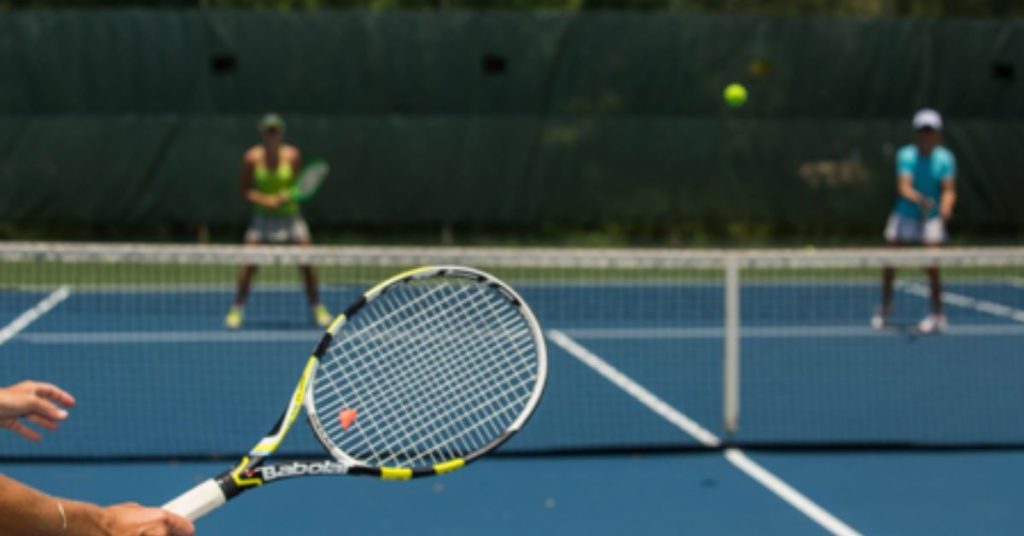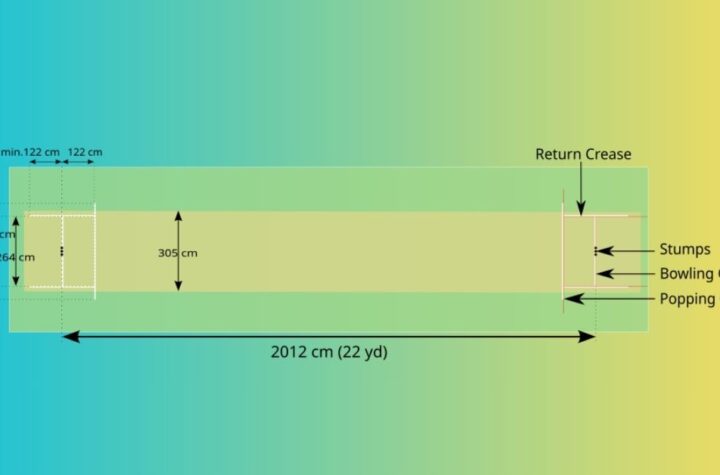
Tennis has a positive strengthening effect on the body. When playing, all muscle groups work. It is a good form of physical activity that develops your strength, balance, and coordination. It is suitable for older people, children, and adults. But how do you start practicing this incredible sport? Now we will tell you and give specific advice!
Why Play Tennis?
Playing tennis has many benefits for both the mind and body. It improves hand-eye coordination, balance, and agility. Like most other intense physical activities, the footwork and upper body movements involved in tennis will help you stay healthy and fit and relieve stress. Tennis requires quick thinking and strategizing, as well as improving problem-solving and critical thinking skills, such as when to step from a ready position, shift your weight, hit a crosscourt or a line drive, or overhead a shot. Along with these benefits, tennis requires at least two players to play a match, meaning it also trains your social skills and, if you play doubles, your teamwork capabilities.
What Are the Basic Rules of Tennis?
For the first training, it is worth finding a good coach who can teach you the stroke and the basics. There are training courses for playing tennis in mini-groups. The advantage of group training is that you can gather a group of friends to play on weekends. However, in any case, you will need basic knowledge.
Keep Your Serve Inside the Line
In singles tennis, the serve must always land above the net and in the opposite service box from your opponent (the area on either side of the center mark on the service line, also known as the “T”). If the ball hits the net but still lands in the appropriate service box, it is called “level,” and the server must start the first serve over again. Even if the ball technically lands outside the box, if any part of it touches the line, it is still in play. During a rally, the ball must remain within the court boundaries in singles – the inside sideline. In doubles, the outside alleys are in play. However, most beginner players do not have a line judge, so they must call the ball “out” or raise a finger if the ball lands outside the lines.
Keep Score
Tennis has a unique scoring system, and it’s important to keep track of your score to determine who wins (and which side you should serve from). The server always says their score first, even if it’s lower than their opponent’s. For example, if the server loses the first three points in a row, the score becomes love-40.
Avoid Touching the Net
You can rush to the net and perform any maneuvers when serving. However, if you or your racket physically touches the net during a point, you automatically lose the game. The net is an equal divider between both sides and any change in its position, even accidental, is unacceptable.
Hold the Racquet
The racket must remain in your hands at all times. If you drop or throw the racket at the ball, you lose the point. The ball can only be returned with the racket and not with any other part of the body. However, the ball does not necessarily have to touch the face of the racket – it still counts as in play, even if it hits the handle or triangle.
Hit the Ball After One Bounce
If the ball bounces twice, the point is over. Likewise, you can only hit the ball once. Even if you pinch the ball and it lands in front of you again, the point is over unless the ball reaches your opponent’s side.
A Ball in the Air is a Ball in Play
Even if your opponent is well behind the back line in “out” territory, if he makes contact with the ball or the ball hits part of his body before it bounces, it is still in play. The ball cannot be called “in play” until it bounces.
Win by Two Points
In a tennis match, both games and points must be won by a margin of two points. In the event of a tie, where both players have won six games in a set and the score is 6-6, a tie-break is introduced. In this case, the players must face each other in a mini-match of seven points. The players change ends after each service point and at the end of the court when the points total six or a multiple of six. The first player to score seven points (a two-point lead) wins. If a tie-break occurs in the last set, the points from one to 10 are played instead, and the winning player must still win two points.
How Does Scoring Work in Tennis?
(Source: https://domgadalki.ru/foto/tennis-texnika)
This knowledge is necessary not only for players but also for bettors. If you are already proficient in tennis and are ready to place bets, check out 1xBet tennis odds. Tennis scoring can be confusing at first, but it’s relatively simple once you get the hang of it. There are six games in a set, and most sets are played best of three (unless it’s men’s professional tennis, in which case sets are played best of five). Players must win each set by two games. Here’s how tennis scoring works:
- The game begins with “love.” Each set begins with a score of 0-0, or “love,” and increases to 15, then 30, then 40 for each point won. For example, if both players win one point in a set, the score becomes 15-15, or 15-all.
- The server’s score is called first. Only one player serves in each game and always starts on the right side of the court, alternating sides at each point. At the end of a set, the players alternate serves, and in every odd game, they alternate sides of the court they are playing on. The server’s score is always called first (so if the server wins the first point of a game and the subsequent point, the score would be 30-love).
- Enter the ad phase. If each player wins enough points to make the score 40-40 (also known as deuce or 40-all), they enter the “declare phase.” Since each game must be won by two points, one player must score two points in a row. If the server wins the first point after a deuce, the score becomes ad-in.
- No-ace counting speeds up the game. According to the official tennis rules, if you prefer a faster game, “no-ace counting” is also acceptable. If you and your opponent decide to play this way, 40-40/deuce becomes a game point, and the game is won by the first player to win the next point.
How to Play Tennis?
If you have been practicing with a friend or coach and feel that your tennis skills are ready for a real match, then use this guide.
Decide Who Serves First
A coin toss or a spin of the racket is a good way to decide who should serve first. Since the serve in tennis is an inherent advantage for the server, it is fair to let chance determine who will serve. Once you have determined who is serving, the server has only two chances to hit the ball. If he hits the ball out of bounds, into the net, or over the line while serving, it is a fault. Failure to land the second serve will result in a double fault and the loss of the point.
Alternate Serving Sides
The first serve of each game is served from the right side of the court, also known as the “deuce side.” The next point is served from the left side, also known as the “ad court” (short for “advantage”). The service sides always alternate, and unless you are serving a second serve, you should never serve from the same side twice in a row.
Use Your Skills
Whether you use your left or right hand, your forehand and backhand it will play a major role in winning points, along with your serve. Be sure to play to your strengths (for example, if you are a player whose backhand is stronger than your forehand, try to maneuver your feet when playing mid-range balls so that you can return more balls).
Use Your Mind
You will have to make quick decisions about what shots you will use: will you stay on the baseline with basic shots or serve and volley, how much topspin will you use, will you try to win or keep the ball in play longer to force your opponent to make an unforced error.
Change Playing Sides on the Odd Games
A level playing field for each player promotes fair play; this is especially true for outdoor courts. Sun and wind can be major factors in tennis, and some sides of the court may be more affected than others. If the sum of the games is an odd number, the players change ends (e.g., 1-0, 3-2, 5-0, etc.). This means that the players always change ends after the first game and then after every two games.
Can Anyone Learn?
(Source: https://sportishka.com/komandnye-vidy-sporta/34433-tennis-ojyny.html)
Like any sport, tennis has a risk of injury and a big strain on the body. Before training, you must undergo a medical examination. The doctor will decide whether tennis is recommended or contraindicated. Common contraindications for training:
- diseases of the musculoskeletal system, bones, and joints;
- diseases of the cardiovascular system;
- lung problems;
- ophthalmological ailments. If there are other chronic or acute stages of diseases, a preliminary consultation with a specialist is required about the possibility of conducting classes.
Selecting a Racquet
There are several design features that you should pay attention to when choosing this piece of equipment:
- Head. If it is very large, it will have a wide area for hitting the ball, and it is difficult to miss but even more difficult to control in your hand. Medium has the optimal balance between speed, impact area, and maneuverability. Small or standard has a small striking spot and an outdated design but great maneuverability. It is better to choose the one that fits optimally in your hand. It will allow you to parry your opponent’s blows for several hours. The width of the head is no more than 31.7 cm.
- Materials. Graphite has a small weight but high strength. Kevlar and Bori are a little stiffer and heavier but even better in terms of strength. Aluminum and titanium are not as maneuverable and convenient but affordable for beginners. Wood is outdated, but many fans of this sport use it.
- Length. It should be comfortable for swinging in any position. According to standards, no more than 73.7 cm.
- Weight. Here, there are no limiting standards. Only the player’s convenience will play a role.
If you are a beginner, it is worth consulting with a coach in advance to choose the best option.
The Court Rules
The game requires a court in the form of a special rectangular area. Dimensions 23.77 x 8.23 or 23.77 x 10.97 (doubles). The court is divided precisely in half by a net. It is fixed on special posts or pillars, covering the entire space from post to post. The upper edge is fixed with belts so that it does not sag at any point along the length. The upper stripe must be white. The game lines are applied to the court: back, side, central, and serve. They must be contrasting, noticeable, and no more than 2.5 cm thick. The back one is up to 5 cm.
The Game Rules
Be sure to learn the rules before you start playing. Of course, if you are training with a coach, he will prompt and correct you. However, it is much more pleasant to learn when you already know the basics. Then, you can focus on technique and skill development. For starters, the basic rules listed at the beginning of this article will be enough.
Conclusion
Now you know how to learn to play tennis, where to start, and how to approach the issue of choosing a school or equipment. All that remains is to take the first steps toward your dream so that the thirst for victory on the court takes over your head.





More Stories